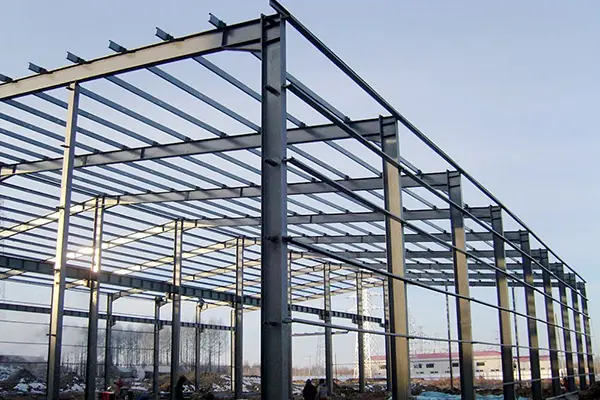Finding the Perfect Steel Section for Your Column: Crafting Strong Steel Structures
When it comes to constructing steel structures, choosing the right steel section for columns is of utmost importance. Columns play a critical role in providing structural support and stability to buildings, making it essential to select the best steel section that can withstand the required load-bearing capacity. In this article, we’ll explore the key considerations when making steel structures columns, ensuring strength and durability. Let’s dive in and discover the ideal steel sections for columns.
1. Understanding Steel Sections for Columns
Wide Flange (WF) Sections
Wide flange (WF) sections, also known as I-beams or H-beams, are popular choices for column construction in steel structures. These sections have a distinctive “I” or “H” shape, with wider flanges and a narrower web. The wide flanges provide excellent load-bearing capacity, distributing the weight evenly along the beam’s length. WF sections offer high strength-to-weight ratio, making them suitable for various column applications, from residential buildings to industrial complexes.
Square or Rectangular Hollow Sections (SHS or RHS)
Square or rectangular hollow sections (SHS or RHS) are another commonly used steel section for columns. These sections have a square or rectangular shape with consistent thickness throughout. SHS and RHS columns offer a sleek and modern aesthetic while providing structural integrity. They are particularly suitable for architectural designs that require clean lines and efficient use of space. SHS and RHS sections are often chosen for commercial buildings, bridges, and stadiums.
2. Factors to Consider for Column Design
Load-Bearing Capacity
The load-bearing capacity is a crucial factor to consider when selecting a steel section for columns. It depends on the anticipated loads, such as the weight of the structure, live loads (occupant or equipment loads), and environmental factors like wind or seismic forces. Engineers analyze these loads and calculate the required column strength to ensure safety and structural integrity. The chosen steel section should have the necessary load-bearing capacity to support the expected loads without excessive deflection or failure.
Column Height and Spacing
The height and spacing of columns in a steel structure influence the choice of steel sections. Tall columns or columns subjected to higher loads may require thicker and stronger sections to maintain stability. The spacing between columns also affects the overall structural design, as wider spacing may necessitate larger sections to distribute the loads effectively. Engineers carefully consider these factors and select appropriate steel sections that can handle the specific column height and spacing requirements.
3. Customization and Expert Guidance
Tailored Steel Sections
In some cases, custom steel sections may be required to meet unique design specifications. Customization allows engineers to optimize the column’s performance by adjusting the dimensions and properties of the steel sections. This can be achieved through various manufacturing techniques, such as hot rolling, cold forming, or welding. Customized steel sections offer flexibility in design and can be tailored to specific project requirements, ensuring an efficient and reliable column structure.
Seek Professional Advice
Choosing the best steel section for a column is a critical decision that requires expertise. It’s advisable to seek guidance from experienced structural engineers or steel fabrication professionals. These experts can assess the project requirements, analyze the loads, and recommend the most suitable steel sections for the columns. Their knowledge and experience ensure that the chosen sections meet safety standards, comply with building codes, and deliver optimal performance.
Conclusion
When it comes to making steel structures columns, selecting the right steel section is crucial for strength, stability, and overall structural integrity. Wide flange (WF) sections and square or rectangular hollow sections (SHS or RHS) are popular choices, each offering unique advantages. Factors such as load-bearing capacity, column height, and spacing must be carefully considered during the design phase. Customization options and seeking professional advice can further enhance the column’s performance. By making informed choices and harnessing the expertise of industry professionals, you can construct steel structures with robust and reliable columns that stand the test of time.
FAQs
Q: Can different steel sections be used for columns within the same structure?
A: Yes, it is possible to use different steel sections for columns within the same structure, depending on the design requirements and load considerations. In complex steel structures, engineers may opt for a combination of steel sections to optimize the performance and efficiency of the columns. Different sections can be selected based on factors like load-bearing capacity, column height, spacing, and architectural preferences. The key is to ensure that the chosen sections work together cohesively to provide the required strength and stability for the overall structure. Professional guidance is essential in determining the appropriate mix of steel sections for a specific project.
Post time: Feb-19-2024




